Author: Matt Del Fiacco
A key component of wine is its acidity, as it contributes to balancing the sweet and bitter flavors, and the same goes for hard cider. Lately, it seems more people are using store-bought juice to produce cider, which some criticize in that it doesn’t contain the acid content found in juice from fresh-pressed cider apples. To compensate, some home cider makers add exogenous acids either to the store-bought juice or finished cider.
Two types of acid that are frequently used in cider making are tartartic and malic, both of which naturally occur in various plants including grapes and apples. Both acids are present in all types of apple juice, but levels are lower in store-bought juice due primarily to the fact they’re typically produced from sweeter table apples. Adjusting with either acid will increase the acidity of the finished cider, which many claim sharpens and improves the flavor, though some believe the type of acid used contributes its own unique characteristics.
I’ve been tweaking my cider with acids for quite some time, particularly when using store-bought juice, as I’ve found it can really brighten things up. I’ve primarily relied on a blend of tartaric, malic, and citric acids for making these adjustments in hopes of getting the best of all worlds, though recently began to wonder about the perceptible impact each acid has on its own, if at all. With cider on my mind, I designed an experiment to test it out for myself.
| PURPOSE |
To evaluate the differences between hard ciders adjusted with either tartaric acid or malic acid following fermentation.
| METHODS |
Hoping to accentuate any differences caused by the type of acid used, I went with a very straightforward cider made from store-bought apple juice.
Gantner’s Family Cider
Recipe Details
| Batch Size | Boil Time | IBU | SRM | Est. OG | Est. FG | ABV |
|---|---|---|---|---|---|---|
| 5.2 gal | 60 min | 0.0 IBUs | 18.7 SRM | 1.050 | 0.997 | 7.0 % |
| Actuals | 1.05 | 1.002 | 6.3 % | |||
Fermentables
| Name | Amount | % |
|---|---|---|
| Apple Juice - Store Bought | 43.98 lbs | 100 |
Yeast
| Name | Lab | Attenuation | Temperature |
|---|---|---|---|
| Bubbles (A40) | Imperial Yeast | 93% | 62°F - 70°F |
Download
| Download this recipe's BeerXML file |
After picking up the juice for this experiment from Costco, I took a hydrometer measurement to determine the OG.
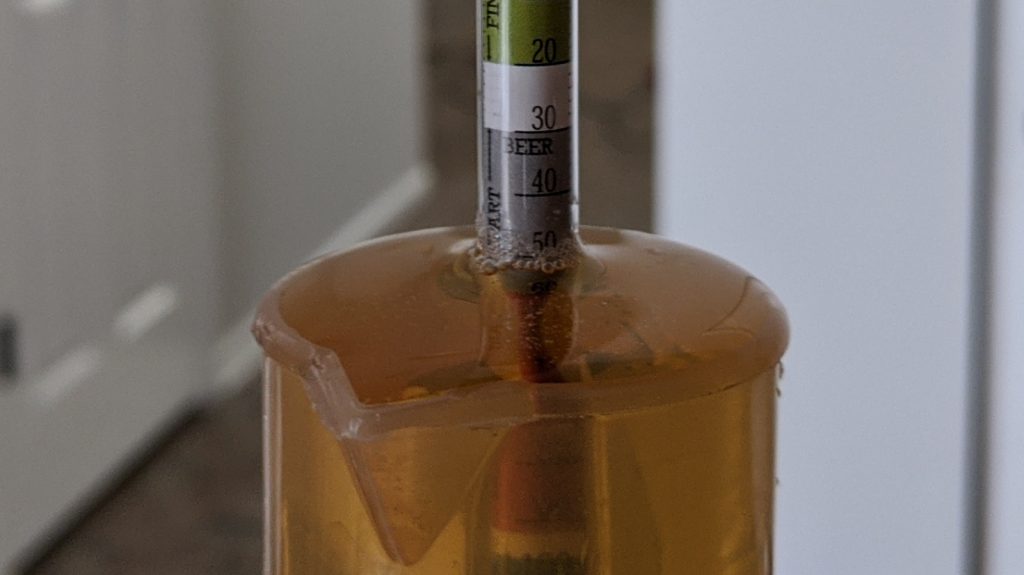
Per my usual process when using store-bought juice, I prepared yeast nutrients then added it along with the apple juice to sanitized carboys.
Next, I pitched a single pouch of Imperial Yeast A40 Bubbles into each batch.
The ciders were fermented next to each other in my chamber at 62°F/17°C for two weeks before I took hydrometer measurements showing both were at the same 1.002 FG.
Using a Vintners Best Acid Testing Kit, I found the titratable acidity (TA) of the fermented cider was approximately 6 g/L. Given this baseline, I determined I would need to add 18.93 grams of tartaric acid and 16.9 grams of malic acid in order for both ciders to hit my desired TA of approximately 7 g/L.
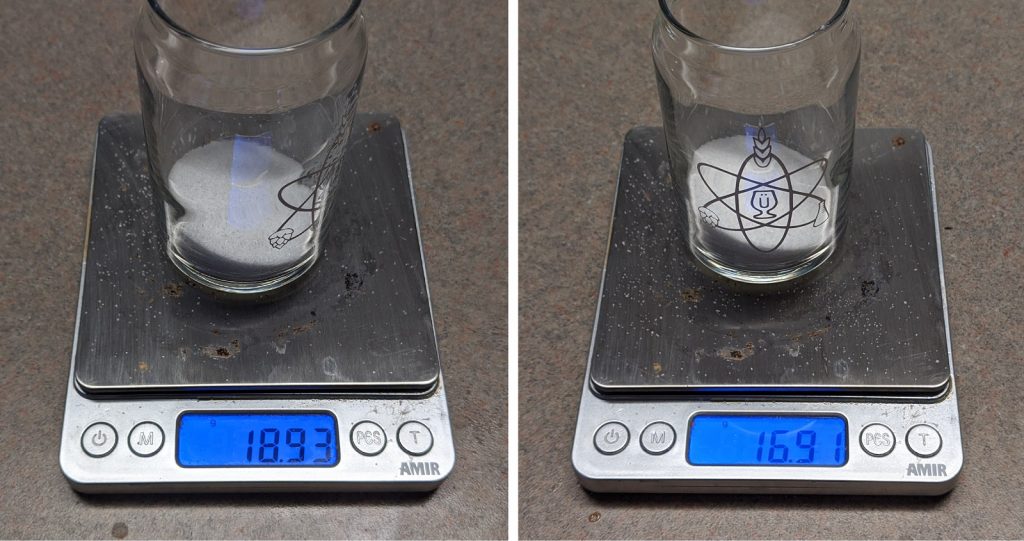
I dissolved the powdered acids in small amounts of cider then added each to separate empty kegs, at which point the ciders were racked into the kegs.
Using small samples of each acidified cider, I did another TA measurement and, based on the colors, found both were right around my 7 g/L goal.
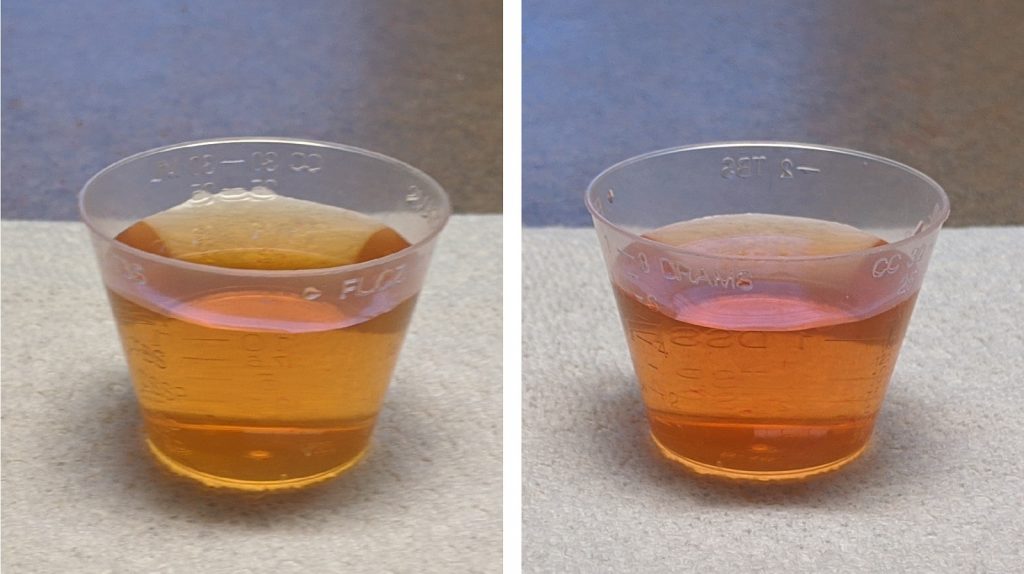
The kegs were placed in my kegerator on gas and left to condition for a couple weeks before they were ready to serve to tasters.
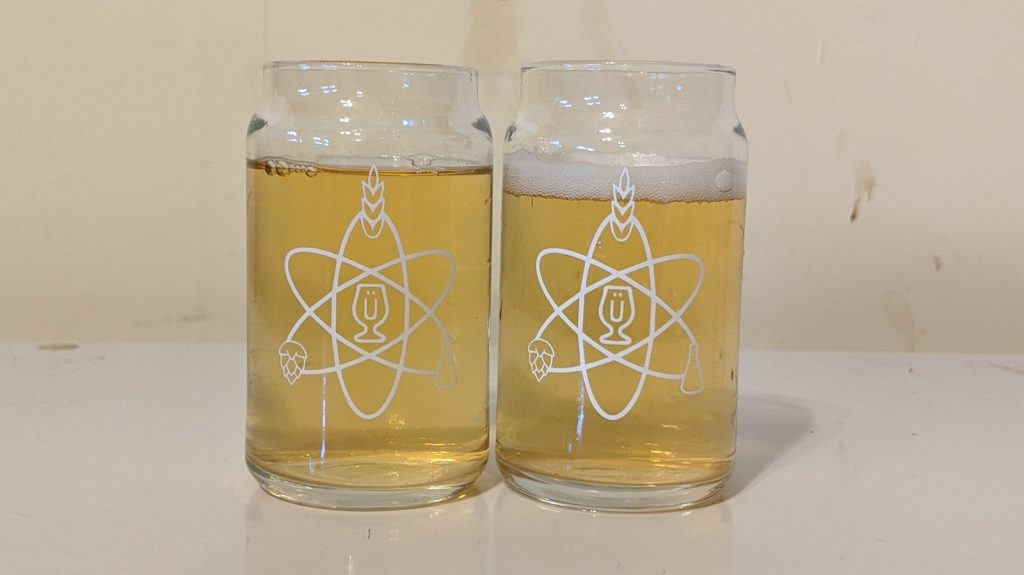
| RESULTS |
A total of 23 people of varying levels of experience participated in this experiment. Each participant was served 2 samples of the cider adjusted with tartaric acid and 1 sample of the cider adjusted with malic acid in different colored opaque cups then asked to identify the unique sample. At this sample size, 12 tasters (p<0.05) would have had to identify the unique sample in order to reach statistical significance, though only 10 (p=0.21) made the accurate selection. These results indicate participants in this experiment were unable to reliably distinguish a cider adjusted with tartaric acid from one adjusted with malic acid to the same TA.
My Impressions: I attempted 5 semi-blind triangle tests and identified the unique sample just 2 times, indicating my inability to tell these ciders apart. Both were bone dry with a pleasant apple character, and I really feel the acid adjustments contributed to their drinkability.
| DISCUSSION |
Acid levels play a role in the overall perception of any beverage, and in the case of cider, proper acidity can contribute to a desirable brightness in flavor by balancing sweet and bitter characteristics. Traditionally, cider is made from the juice of apples that possess higher amounts of certain acids than standard table apples, which are typically used to produce the type of juice found on store shelves. To bring life back to ciders made from store-bought juices, it’s often recommended to make adjustments with exogenous acids such as tartaric and malic, which some claim impart their own unique flavors. The fact tasters in this experiment were unable to reliably distinguish ciders adjusted with either tartaric or malic acid seems to call this claim into question.
While these findings suggest tartaric and malic acids contribute similar flavors to cider, it’s also possible other factors played a role in tasters being unable to reliably tell them apart. One thing that comes to mind is that the carbonic acid present from being carbonated overshadowed any differences caused by the tartaric and malic acids, thus leveling the playing field. For those who prefer carbonated cider, this suggests acid type may not matter too much, though it’d be interesting to see how things would pan out if the ciders were still.
I thought the results of this experiment were interesting and plan to further explore the impact different acids have when used to adjust cider. At this point, I’ll continue using acid blends, though I may experiment with blending my own in various proportions to see what effect that has.
If you have any thoughts about this cider experiment, please do not hesitate to share in the comments section below!
Support Brülosophy In Style!
All designs are available in various colors and sizes on Amazon!
Follow Brülosophy on:
FACEBOOK | TWITTER | INSTAGRAM
If you enjoy this stuff and feel compelled to support Brülosophy, please check out the Support page for details on how you can very easily do so. Thanks!


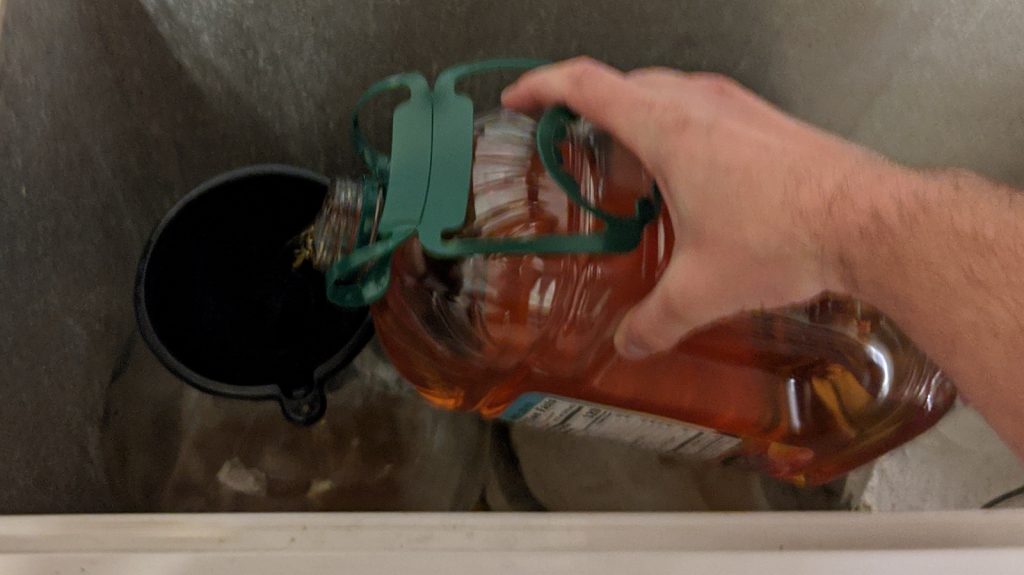
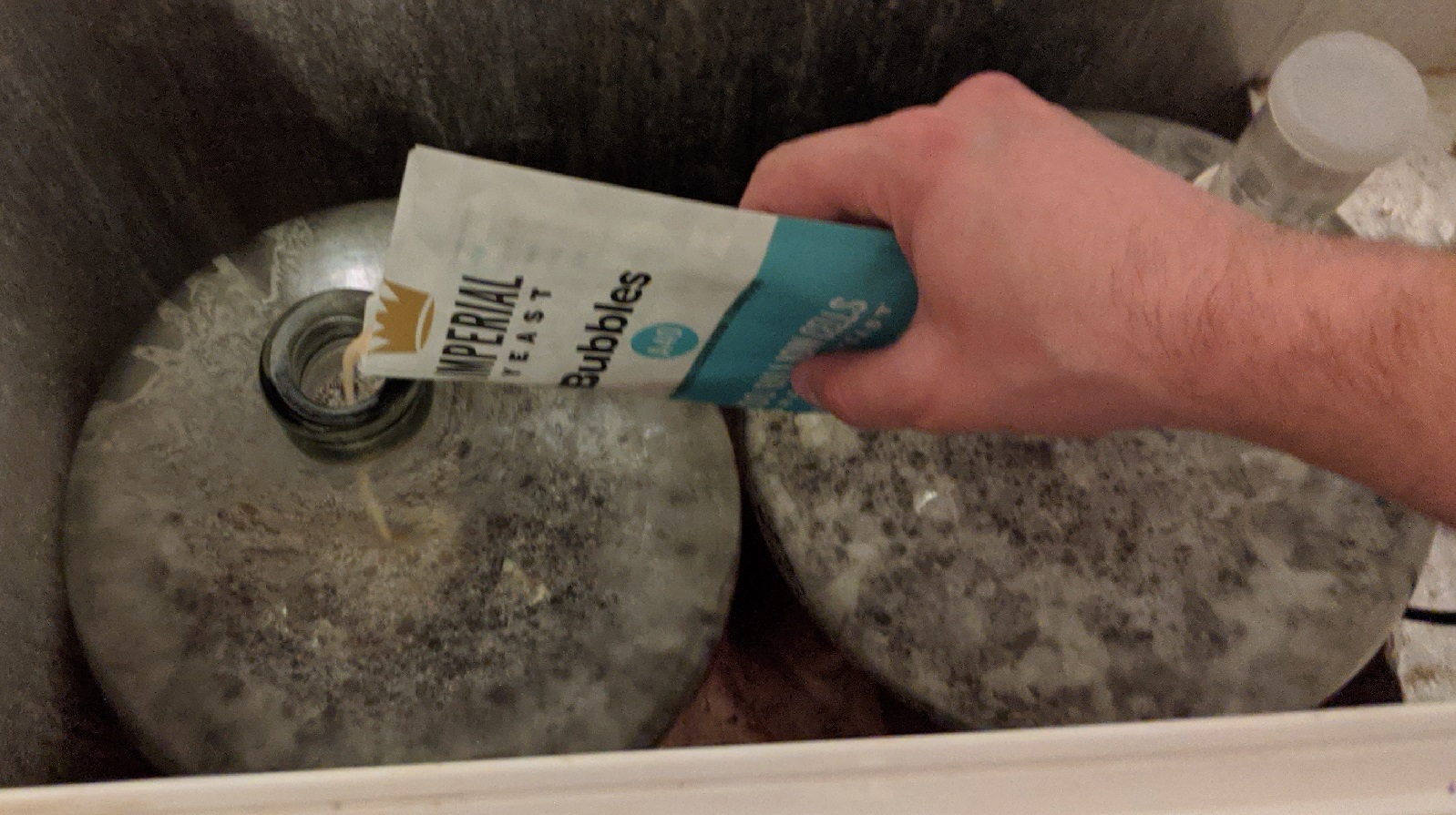
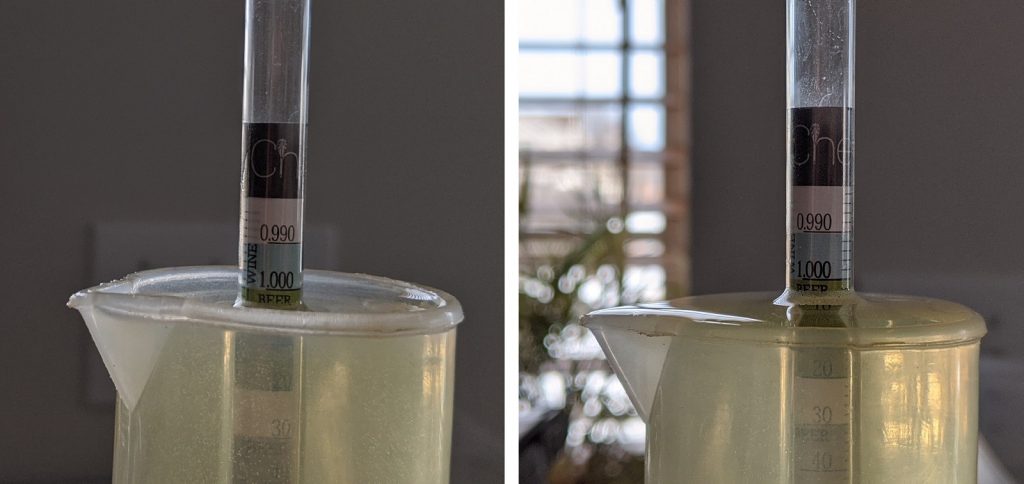
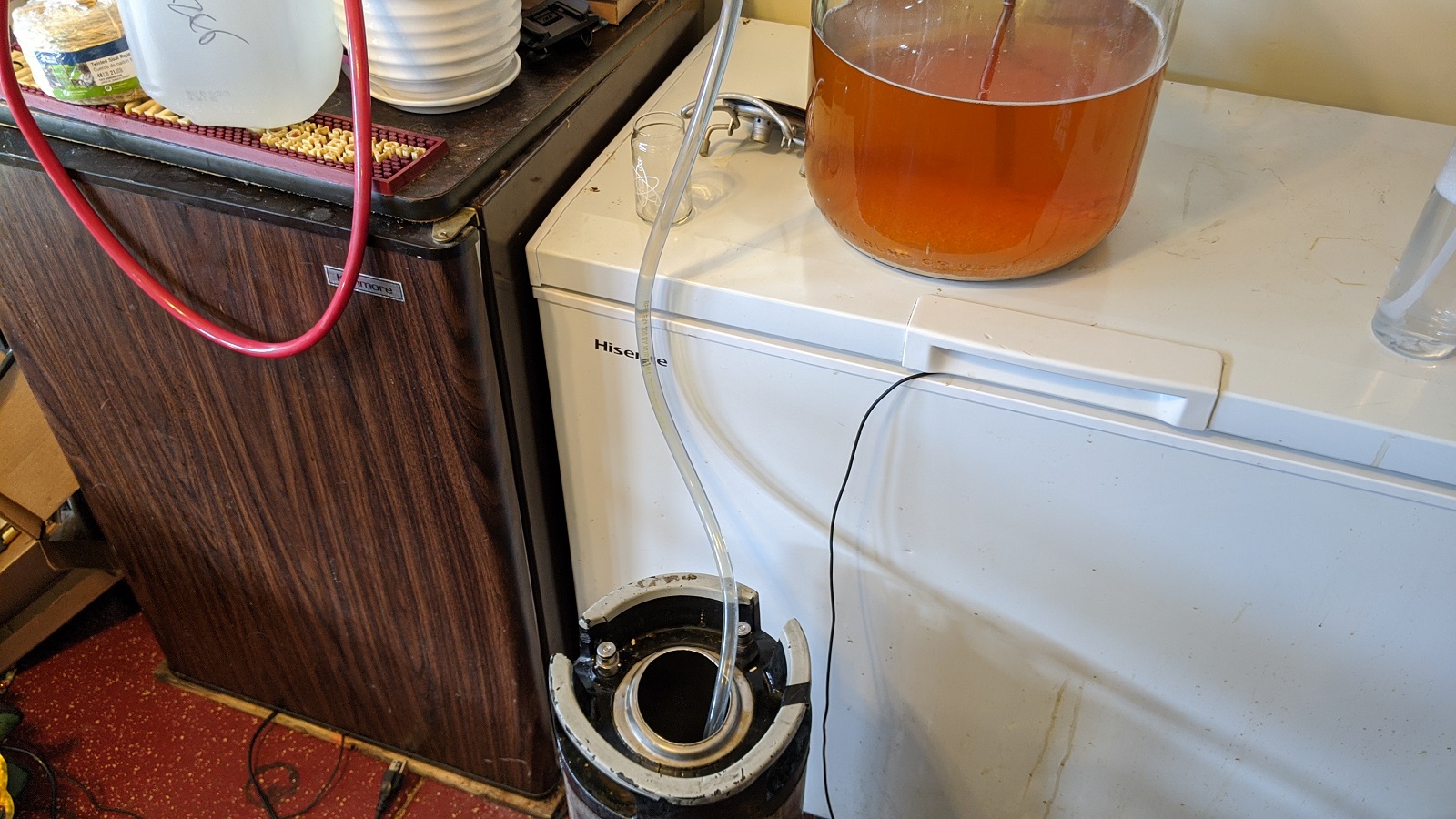











9 thoughts on “exBEERiment | Hard Cider: Tartaric vs. Malic Acid Adjustments In A Hard Cider When Using Store-Bought Juice”
Good xBmt! I’ve often heard that Malic Acid was preferred for cider, since it is the primary acid present in apples, but this reinforces my own practice of just using winemaker’s acid blend (containing malic, citric and tartaric acids). I use it in both meads and ciders, so I like having one item on the shelf for everything.
Thanks for doing the experiment and sharing the results. I’ve made lots of cider over the years, but I have never heard of a Titratable Acidity or knew you could test for it. Could you perhaps explain a bit about it and how it’s different from doing a straight forward PH test? Do those 6g/litre translate into a desired PH level I may use?
For sure. One of the best resources out there (in terms of accessibility of information) is in the Milk the Funk Wiki. Basically, TA (Titratable Acidity) is a way we approximate the Total Acidity of a solution, and they don’t have a direct relationship. A lot of breweries will use pH for how sour their beer is, but TA is a better representation of how acidity will be perceived. Something could have the same TA with different pH levels, and would likely taste incredibly similar. pH is obviously also important for fermentation purposes, but the TA is a good representation of character. So 6g/liter doesn’t translate directly to a pH unfortunately.
Adding to the above questions, how did you determine your target of 7g/L TA? Also, have you ever adjusted with tannin? if so, how did you determine your target?
Hi, the recipe details mention a 60 minute boil but this is not mentioned anywhere in the process. Is this a mistake or have you left some details out?
I’m interested in learning more about choosing targets for TA (titratable or total). Is there a source you recommend that details the differences 6 g/L v. 7 g/L makes on taste?
I’m curious how this xBmt might have come out with a no-added-acid control. I’ve been having this problem with my store-bought juice ciders being very bland lately, almost to the point of being unpalatable, and perhaps the answer is better acid control.
My only thing is that you should had a control group where you used a non adjusted cider. That would have given you a base line to see if the acids added did enough for the store bought juice. Just my thought
Your recipe download is just HTML